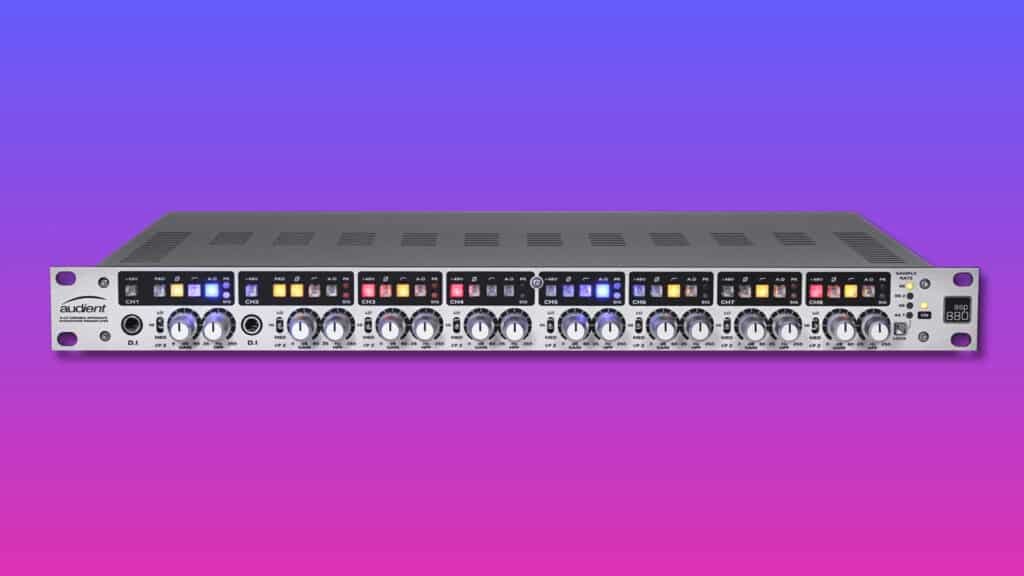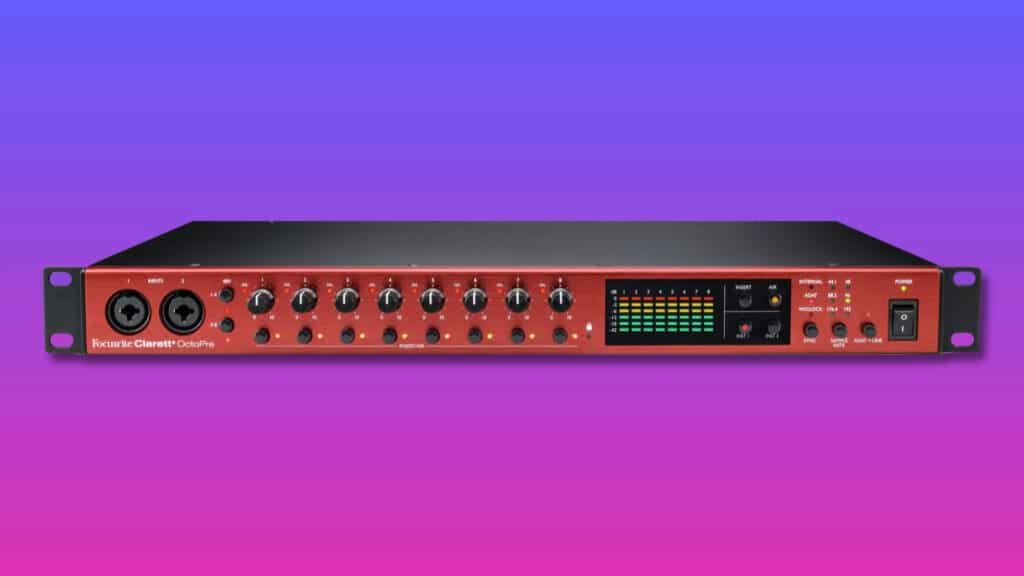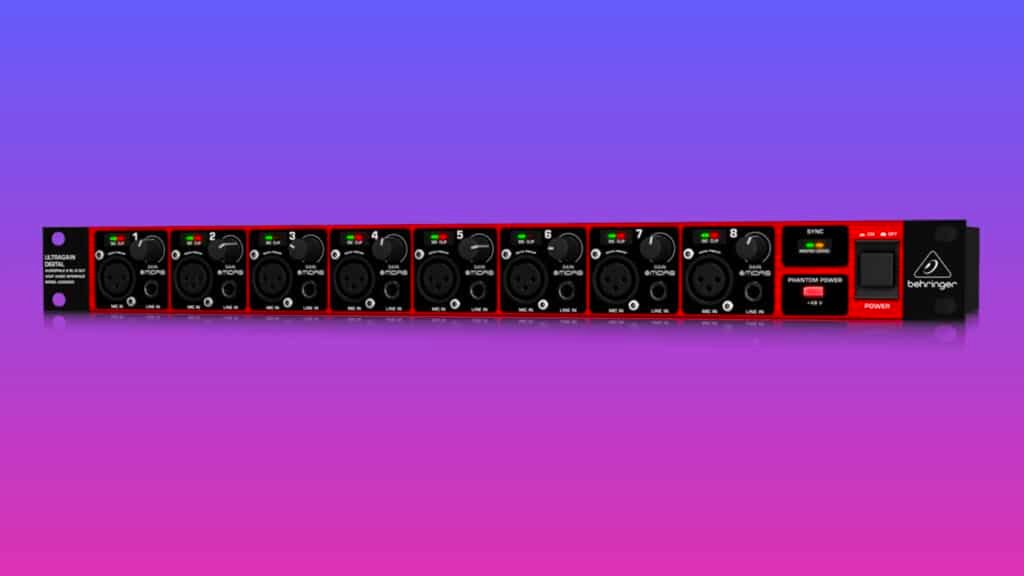If you own a Universal Audio Apollo interface, you probably know that all of this series has ADAT ports. But which ADAT preamp to use with your Apollo interface? That depends on a lot of things, including the number of inputs you need, your budget, and the color you’re looking for in your recording.

Here are the best ADAT preamps you can use with your Apollo interface:
- Heritage Audio Super 8
- Universal Audio A 4-710D
- Focusrite ISA 428 MKII
- Audient ASP 880
- Focusrite Clarett+ OctoPre
- Behringer ADA8200
These preamps (which can all be used as ADAT expanders) have a budget that can range from very affordable to quite expensive. The reason for this diversification is simple: everyone’s needs and budgets are different.
Note also that the vast majority of these ADAT expanders are equipped with 8 channels. The goal being to increase the number of inputs of your Apollo, it seemed logical to me to select interfaces with many inputs as well.
But of course you are free to look at the other series of the brands presented in this article and choose ADAT interfaces with fewer inputs.
Need a professional sound engineer specializing in pop and hip-hop mixing ? Great! Take a look at our services and let’s blow up your career together!
Let’s start now!
What is ADAT?
ADAT is an optical digital protocol that allows up to 8 audio channels to be transported from one digital device to another, and vice versa. This number of channels is reduced to 4 when the sample rate used is increased to 88.2 or 96 kHz. At 44.1 or 48 kHz, the ADAT protocol will still be able to transport 8 channels of audio through a single Toslink cable.
But wasn’t ADAT the 8-track digital recorder that recorded the audio signal on VHS cassette tapes? Yes, indeed it was! That’s where the name comes from. ADAT stands for Alesis Digital Audio Tape.
But as you can imagine, those VHS cassette recorders are long gone from the market. What has remained is the optical ADAT connection format. Over the years, ADAT has become the digital protocol we know today.
Why is the ADAT protocol so popular?
The ADAT protocol has become extremely popular in recent years. Especially in home studios and semi-pro studios. But why is this digital protocol so popular? Three reasons can be put forward:
- The first one is the popularity among manufacturers. Indeed, more and more audio devices are built with ADAT ports. This democratizes this type of protocol completely among audio engineers, whose access to ADAT is easy.
- The second is the ease of use of the ADAT audio protocol. This digital communication mode is indeed far from being the most complex and is easy to set up. Even in an “amateur” home studio.
- The third is simply the number of channels that this audio protocol can carry: 8. In the studio world, many devices have 8 channels, or operate in increments of 8, 16, 24 or 32. Interfaces, preamps, converters, ADAT expanders,… When all devices in a studio stick together, everything becomes easier!

How ADAT works: Quick explanation
ADAT is an optical digital protocol that uses the Toslink connector to transport the audio signal from one audio device to another.
To make the protocol work, you just have to plug the Toslink cable in the ADAT OUT of the sending device and plug the other side in the ADAT IN of the receiving device. In the context of our article, this will be an Apollo interface.
The sample rate must always be the same from the ADAT interface (or expander) to your computer. Make sure of this before going any further in the process.
Process 1
You will then be able to enjoy an 8-channel uncompressed transport if you choose a sample rate of 44.1 or 48 kHz. This number of channels will be reduced to 4 if you choose 88.2 or 96 kHz, and to only 2 channels if you decide to go to 176.4 or 192 kHz.

The problem with this principle is that if you have an 8 channel preamp and you want to use a maximum of channels with a comfortable sample rate, you have to make a choice. Either use the 8 channels at your disposal at 44.1 or 48 kHz, or favour the sample rate but use only 4 channels. Not very practical for professional recording… But there is a solution!
Process 2
If your sending and receiving devices are respectively equipped with two ADAT outputs and inputs, you can double the number of usable channels from 88.2 kHz. Just use a second optical cable, and you’re done!

The ADAT protocol is therefore very practical on many levels. You save yourself the hassle of cable management and you can let synths or other devices plug into the ADAT interface. With an audio quality that is as good as analog.
But you’re certainly not here to get a lecture on the ADAT protocol! Now it’s time to dive in and list the best ADAT interfaces to use with your Apollo. To finally enjoy more inputs with ease!
⬇️ PRO QUALITY ⬇️
1. Heritage Audio Super 8

With the Heritage Audio Super 8, we clearly reach a high level of quality. By choosing this 8 channel preamp, you are on top of the top of audio quality and construction.
This Heritage Audio preamp is obviously much more expensive than the other preamps on this list due to the impeccable quality of its preamps and converters. But it is worth listing if you are looking for (near) perfection.
The Super 8 preamp has 8 mic inputs, 8 line inputs in Sub-D25, 2 instrument inputs, 8 line outputs in XLR and 8 in Sub-D25 and 8 ADC returns also in Sub-D25. You will have understood, this beast is extremely complete and allows to make simple routings as well as more complex ones.
If the quality of the preamplifiers is impressive, it is notably thanks to their Class A technology in 3-stage built in 73-style (which refers to the legendary Neve 1073 preamplifier). But also thanks to the Carnhill transformers whose reputation is well known.
For even more precision in your recordings, each channel is equipped with a high-pass filter, a mic/line switch, a phase inverter and, of course, a +48V switch. Below each input gain knob there is also an output gain knob. The control is total!
✅ PROS ✅
✅ High build quality
✅ Pro-quality preamps with wide range (80 dB)
✅ Variable low-cut on channel 1-2
✅ ADC return for more confort with external gear
✅ Lots of adjustable parameters
✅ Very modulable routing
✅ Double ADAT output
❌ CONS ❌
❌ Super expensive piece of gear
2. Universal Audio 4-710D

Universal Audio is probably one of the most influential brands in the studio world in recent years. And this 4-710D preamp is probably one of the best representatives of this flawless quality.
The 4-710D is a 4 channel preamp with 4 mic inputs, 4 XLR line inputs, 4 jack line inputs, 4 high impedance inputs, 4 send/return inserts and a Sub-D25 line output.
On the digital side, the preamp has two ADAT outputs and a WordClock input and output. The 4-710D has a sample rate of up to 192 kHz.
The parameters on the front panel provide the user with everything he needs to make a good recording. Each channel has a 1176-style compressor that can be controlled with the gain and level knobs. But you will also find, per channel, a pad, a 48V switch, a meter switch, a low-cut filter and a phase inverter.
But the great feature of this preamp, and what makes it completely unique, is the possibility to blend the tone of a tube and solid state preamp. You can manage this blend with the knob located at the bottom of each slice and thus add a “made in UA” color to your recordings.
All these elements make the 4-710D a unique multi-channel preamp and probably the most flexible in its field.
✅ PROS ✅
✅ Super flexible tool
✅ Integrated 1176-style compressor for each channel
✅ Complete and adjustable parameters on the front panel
✅ Adds a unique tone to your recordings
❌ CONS ❌
❌ None
3. Focusrite ISA 428 MKII

At Focusrite, the ISA series represents the top of the line of their products, which are, let’s be honest, already of very good quality and very reliable.
The ISA 428 MKII is a 4 channel preamp that has 4 mic inputs, 4 line inputs on jack, 4 instrument inputs on jack also on the front panel, 4 inserts (send/return) and 4 ADC inputs that will allow you to use the inserts and the digital outputs at the same time.
In its initial design, the ISA 428 MkII does not have a digital element that would allow the output of these 4 channels in ADAT. But an external card can be purchased separately to turn it into an ADAT expander.
In its mode of operation, this 4-channel preamp is very similar to its namesake from Universal Audio. It has indeed a lot of adjustable parameters on the front panel, which allows to make recordings combining quality, efficiency and precision.
On each channel, you have the possibility to modify, through a switch, the gain boost (+30 dB when activated), the phantom power, the phase, and the activation or not of an adjustable high pass filter. You also have the possibility to modify the input impedance to change the tone of the recorded audio sources.
A small switch located at the bottom of each channel also allows you to activate or deactivate the insert (if there is one).
✅ PROS ✅
✅ Good build quality
✅ Very comfort and complete front panel
✅ Adjustable high-pass filter
✅ Accurate meters
✅ Variable impedance for tone and color
❌ CONS ❌
❌ Digital converter to be purchased separately

⬇️ SEMI-PRO QUALITY ⬇️
4. Audient ASP 880

The fourth preamp on this list is the Audient ASP 880. The ASP 880 is an 8 channel preamp with 8 inserts (which can also be used as analog outputs) and 2 high impedance inputs for guitars and basses.
Each mic input has a 48 Volt switch, a pad, a phase inverter and a high-pass filter adjustable from 25 to 250 Hz. This makes this device a very complete and instinctive preamp.
This Audient preamp also has a special feature that scores points: a converter on/off switch. This allows the user to choose whether the channel is sent to analog or digital output. Very practical and ultra flexible!
Another interesting feature is the variable impedance of the mic preamps. Audient allows the user to choose between low, high or mid impedance. This completely changes the tone and color of the recorded signal.
With the Audient ASP 880 in your studio, you don’t have to worry about the quality of the conversion. This 8-channel preamp is equipped with high quality 113 dB dynamic range converters.
✅ PROS ✅
✅ High dynamic range and quality converters
✅ Lots of adjustable parameters
✅ 8 inserts available
✅ Variable impedance
❌ CONS ❌
❌ Very small buttons and knobs
5. Focusrite Clarett+ OctoPre

In terms of reliability, Focusrite can clearly boast to be among the best. And this Clarett+ OctoPre does not disappoint. The Clarett+ OctoPre is an 8 channel preamp with 2 JFET instrument inputs, 6 mic/line inputs and 8 inserts (one for each channel). This preamp also allows the user to output the signal in analog through the Sub-D25 line output.
This Focusrite device is equipped with 24-bit AD/DA converters with a sample rate of up to 192 kHz and a dynamic range of 118 dB. It also has 2 ADAT inputs and outputs, which allows you to potentially increase the number of tracks communicating with your Apollo interface.
The special feature of the Clarett+ OctoPre is the Air switch available below each channel. This switch allows you to add a touch of high frequencies in the upper part of the spectrum and thus add air to your recordings.
This Focusrite preamp also has WordClock connectors, which can be very useful, especially in professional environments.
✅ PROS ✅
✅ Double ADAT output and input
✅ Very recent technology (2022)
✅ Air boost available for each channel
❌ CONS ❌
❌ Very few adjustable parameters
⬇️ ENTRY-LEVEL QUALITY ⬇️
6. Behringer ADA8200

While the quality of the previous preamp was undeniably good, we now fall much lower, on a product of a much more modest quality: the Behringer ADA8200.
The ADA8200 is equipped with 8 Midas-designed mic preamps, 8 line inputs and 8 line outputs in XLR. The quality of the preamps can be considered as good, without being out of the ordinary.
On the digital side, the ADA8200 has a 24-bit optical ADAT input and output with a sample rate of 48 kHz. It also has a word clock input on the back of the panel to inject an external sample source.
On the front panel, a phantom power switch is available for the user to activate or not the 48V on the microphone inputs.
This Behringer preamp is therefore a very easy to use and simplistic tool in its design and construction. But it is difficult to place it in the category of pro equipment. If you need something cheap and of average quality to exclusively increase the number of inputs of your interface, then the ADA8200 may be a good option.
✅ PROS ✅
✅ Very intuitive use
✅ Affordable
❌ CONS ❌
❌ Medium quality preamps
❌ Poor build quality
❌ Gain knobs not very accurate
❌ Lack of adjustable parameters
Need a professional sound engineer specializing in pop and hip-hop mixing ? Great! Take a look at our services and let’s blow up your career together!
Let’s start now!
Conclusion
Choosing the right ADAT preamp to expand the number of inputs on your Apollo interface depends a lot on your need for additional inputs and your budget.
If you sometimes record bands but are not yet in the pro business, you will not go for the Super 8, but rather for the ADA8200. On the contrary, if music recording is your daily business and your need for quality is a priority, then preamps such as the ISA 428 MkII or the 4-710D will be more suitable.
Anyway, using ADAT interfaces is very convenient and saves money, time and, indirectly, productivity. This is totally non-negligible. Even if you are not yet in the pro business, I really advise you to go for an ADAT setup.
If you have any questions about ADAT preamps /expanders or about anything in the field of music mixing and recording, please contact me, I’m always very happy to help!
Related Articles:
My favorite tools for mixing pop and hip-hop music:
Plugins
In the field of auto-tune, I’m convinced that nothing’s better and more efficient than Antares Auto-Tune Pro. As for the EQ’s, FabFilter Pro-Q3 and Slate Digital Infinity EQ are, in my opinion, the best tools. For compression, I have 2 favorites plugins: Waves RComp and UAD EL8 Distressor.
As for reverb, I’m a big fan of the Soundtoys Little Plate, but generally, I go for the Valhalla VintageVerb for its versatility. I also love the Arturia Rev PLATE-140 and the UAD Pure Plate for its organic side.
Headphones
The closed headphones I love and will always love using for mixing pop and hip-hop music are the Beyerdynamic DT-770. As for the best open-back headphones, I use the Sennheiser HD600 headphones, and I’m really happy of them!
Monitors
Having a pair of Yamaha HS7 in its studio or home studio is always cool for more excitement while listening to your mixes. The Adam Audio T7V monitors are also super accurate. In my studio, I also have a pair of Genelec 8030 for their reliability.
Hardware gear
For anyone who wants to start using hardware in their mixes, I always recommend these 2 units from Klark Teknik: the EQP-KT and the 76-KT. Don’t forget to use good converters, such as the Apollo interfaces. This is essential for a good rendering.







